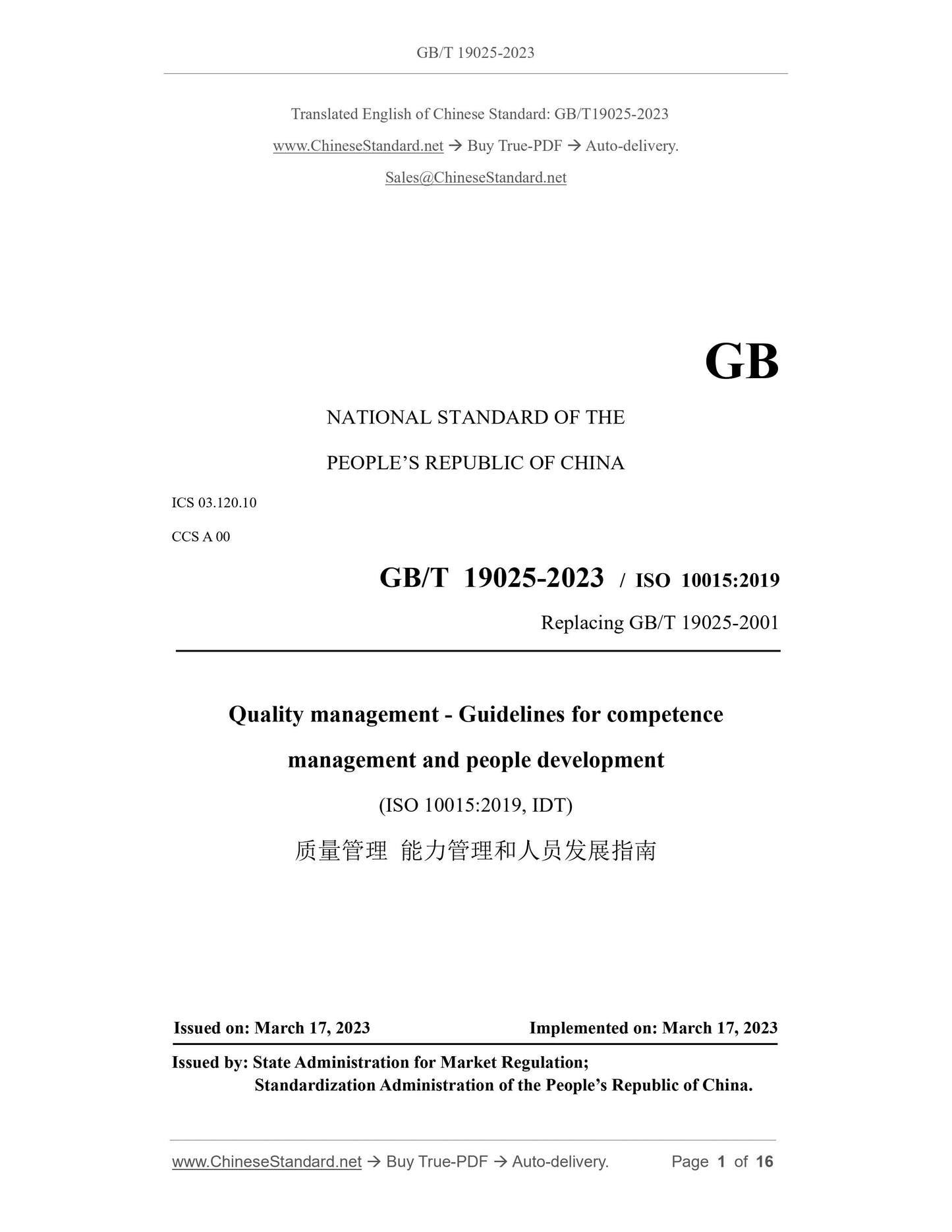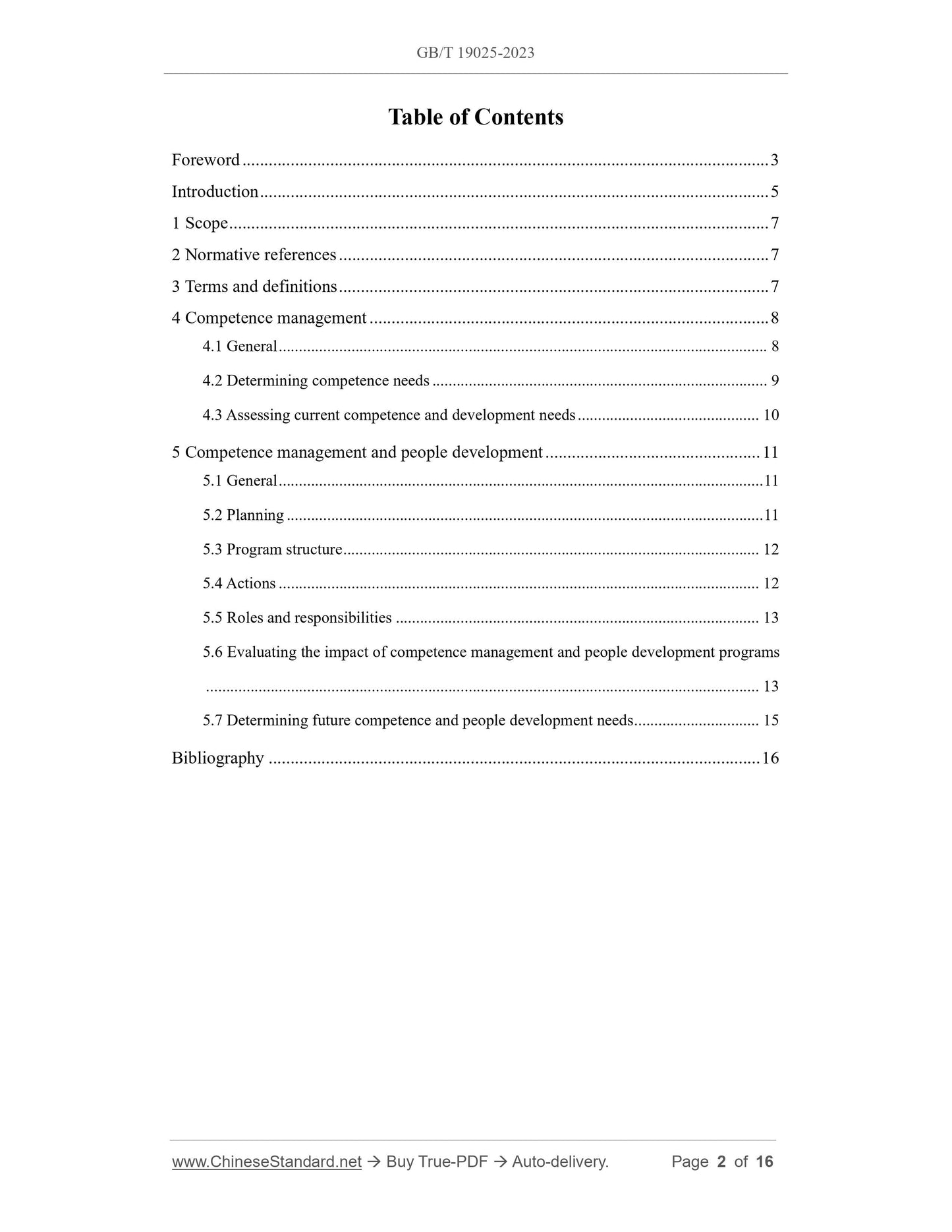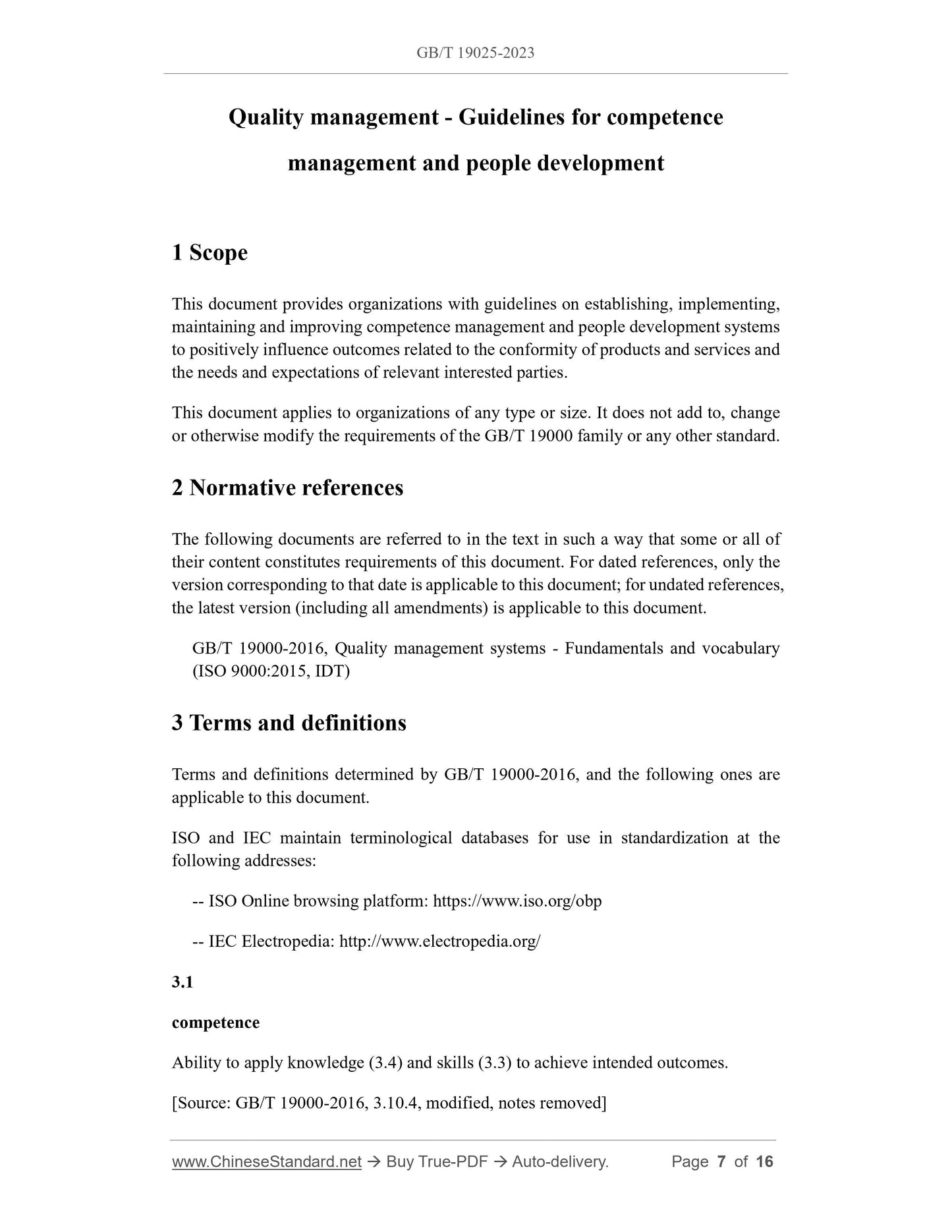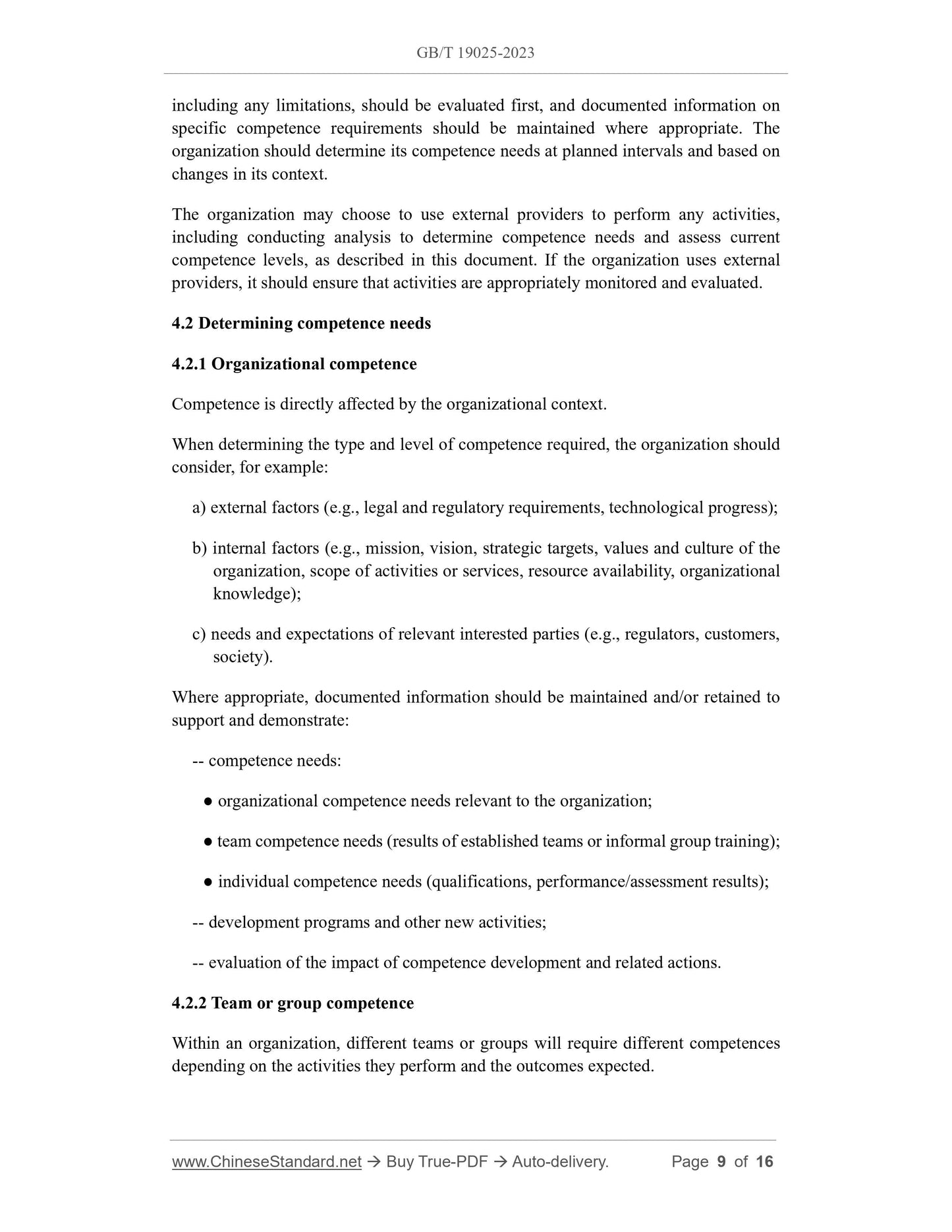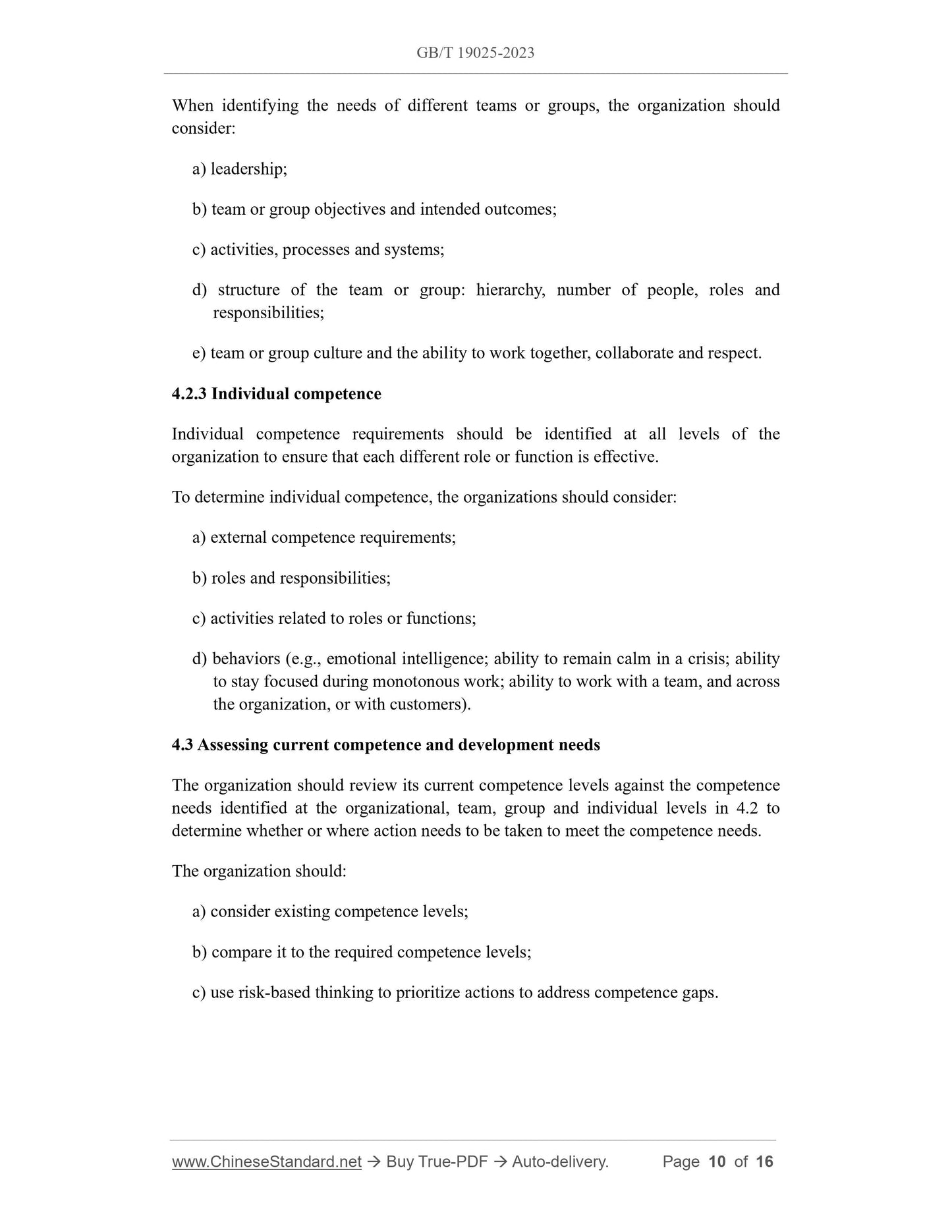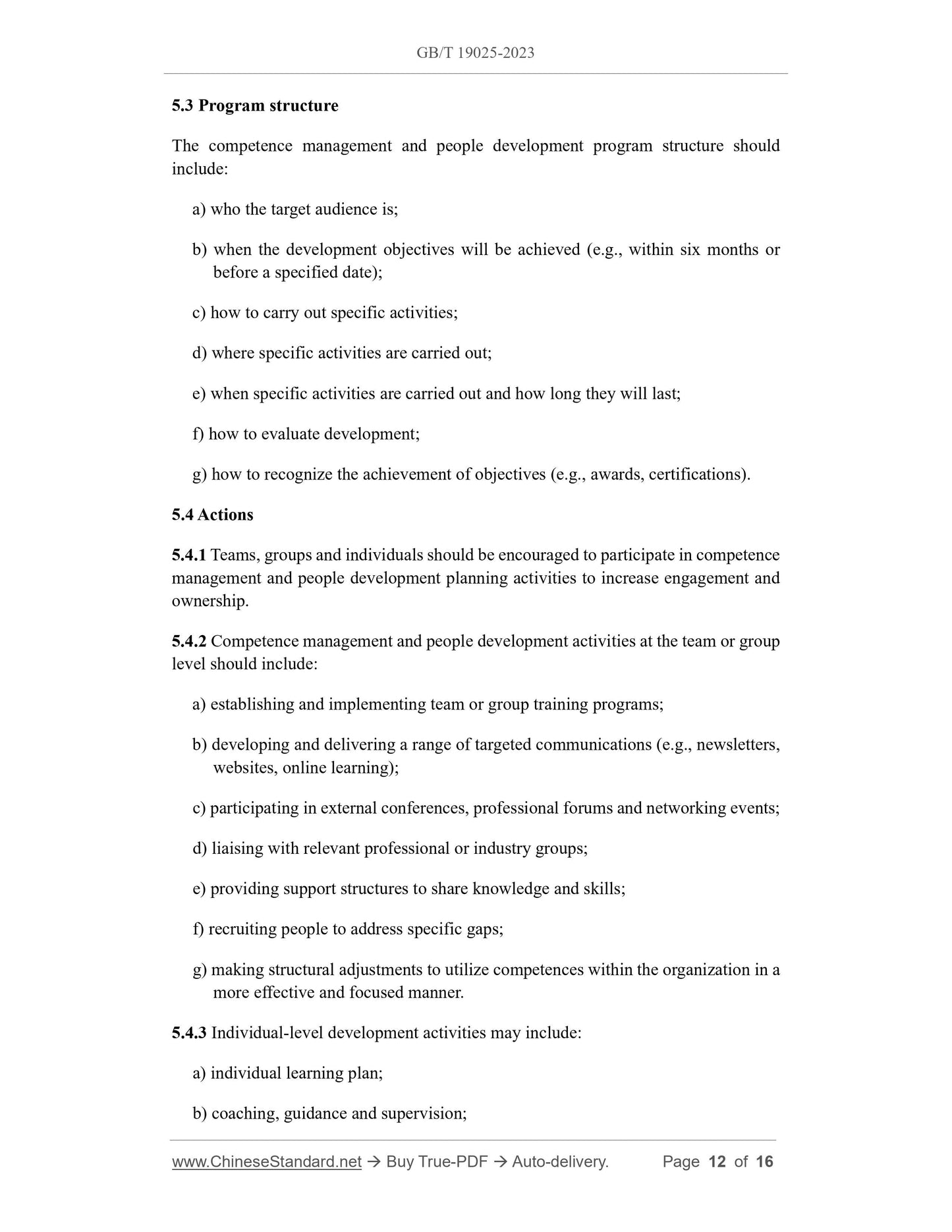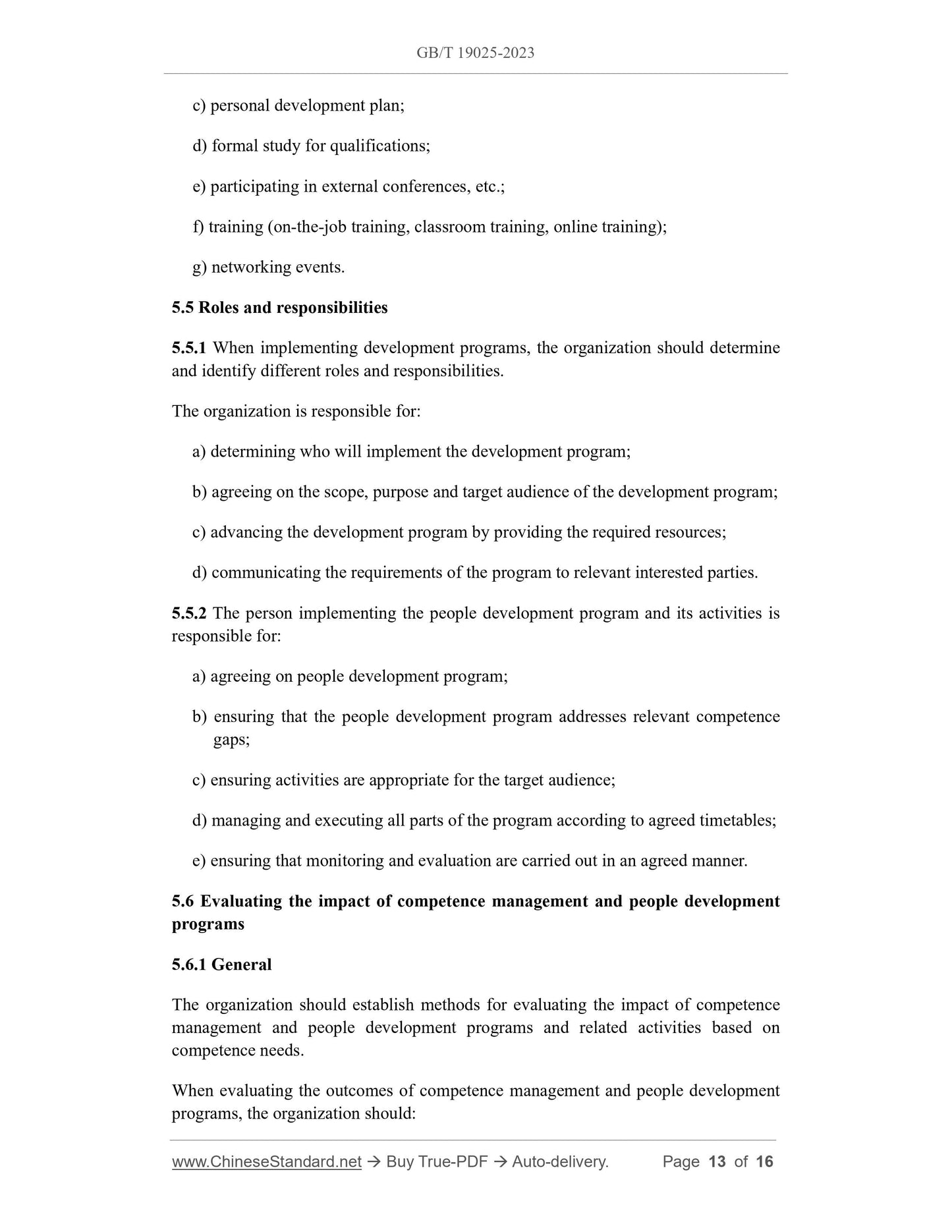1
/
of
7
www.ChineseStandard.us -- Field Test Asia Pte. Ltd.
GB/T 19025-2023 English PDF (GB/T19025-2023)
GB/T 19025-2023 English PDF (GB/T19025-2023)
Regular price
$205.00
Regular price
Sale price
$205.00
Unit price
/
per
Shipping calculated at checkout.
Couldn't load pickup availability
GB/T 19025-2023: Quality management - Guidelines for competence management and people development
Delivery: 9 seconds. Download (and Email) true-PDF + Invoice.Get Quotation: Click GB/T 19025-2023 (Self-service in 1-minute)
Newer / historical versions: GB/T 19025-2023
Preview True-PDF
Scope
This document provides organizations with guidelines on establishing, implementing,maintaining and improving competence management and people development systems
to positively influence outcomes related to the conformity of products and services and
the needs and expectations of relevant interested parties.
This document applies to organizations of any type or size. It does not add to, change
or otherwise modify the requirements of the GB/T 19000 family or any other standard.
Basic Data
| Standard ID | GB/T 19025-2023 (GB/T19025-2023) |
| Description (Translated English) | Quality management - Guidelines for competence management and people development |
| Sector / Industry | National Standard (Recommended) |
| Classification of Chinese Standard | A00 |
| Classification of International Standard | 03.120.10 |
| Word Count Estimation | 11,111 |
| Date of Issue | 2023-03-17 |
| Date of Implementation | 2023-03-17 |
| Older Standard (superseded by this standard) | GB/T 19025-2001 |
| Issuing agency(ies) | State Administration for Market Regulation, China National Standardization Administration |
Share
